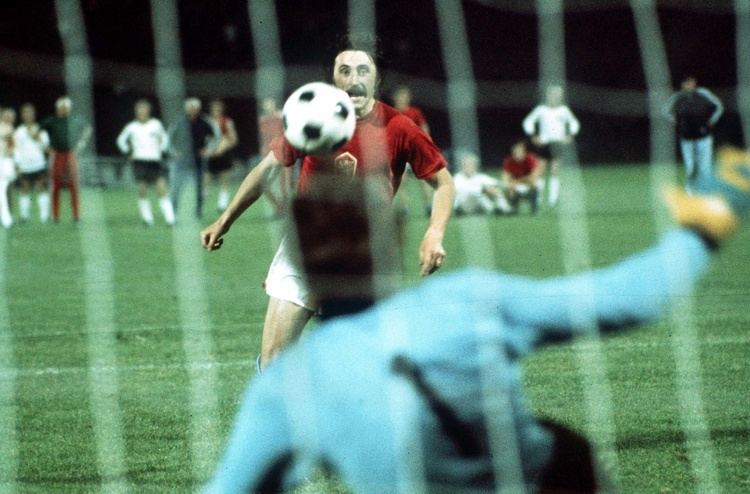 | ||
In association football, the Panenka is a technique used in penalty kick-taking in which the player, instead of kicking the ball toward the left or right corner of the goal, gives a subtle touch underneath the ball, causing it to rise and fall within the centre of the goal thus deceiving the goalkeeper. It was created by Czech player Antonín Panenka, who presented this technique to the world in the 1976 UEFA European Championship finals, when he beat German goalkeeper Sepp Maier and gave the title to the Czechoslovakian national team. After its sensational debut in the tournament, the Panenka kick has been used on rare occasions and mostly by highly respected players who can deal with the consequences of missing a penalty kick that way. This style of penalty kick is also called Il cucchiaio ("the spoon"), in the Italian speaking world.
Contents
Technique
The aim of the technique is not to chip the ball over the goalkeeper but to take advantage of the fact that many goalkeepers will dive to either side of the goal in anticipation rather than waiting to see in which direction the ball is going. It is a very risky technique, because the subtle touch on the ball gives it a very slow speed, thus allowing the goalkeeper to move back from where he jumped to or even just stay at the same spot and wait for the ball to easily fall on his hands. The move is known for only being used by fearless players who dare to risk missing the kick. Because of the high risk of missing the kick, some players that used the Panenka kick were criticized by the specialized media or their team's members and supporters for being frivolous, using an unnecessary method to score the goal.
The original penalty
Antonín Panenka came to international prominence playing for Czechoslovakia in the 1976 European Championship; Czechoslovakia reached the final, where they faced West Germany. After extra time, the result was 2–2, and so the first penalty shootout in a European Championships final ensued. The first seven kicks were converted, until West Germany's fourth penalty taker, Uli Hoeneß, ballooned his shot over the bar. With the score 4–3, Panenka stepped up to take the fifth Czechoslovakian penalty, to win the match under immense pressure. He feigned shooting to the side of the goal, causing German goalkeeper Sepp Maier dive to his left, and then gently chipped the ball into the middle of the net. The sheer cheek of the goal led a watching French journalist to dub Panenka "a poet", and his winning kick is one of the most famous ever, making Panenka's name synonymous with that particular style of penalty kick.
Post-1976
As well as winning the 1976 European Championship, Panenka helped Czechoslovakia come third in the 1980 tournament, after scoring once again in a 9–8 penalty shootout win. In the finals of the 1982 World Cup, Panenka scored twice with penalties, but these were the only Czechoslovakian goals, and the team did not progress beyond the first group stage.
The Panenka penalty has since been successfully performed by many other players, such as Francesco Totti at the UEFA Euro 2000, Zinedine Zidane in the 2006 FIFA World Cup Final, and Alexis Sánchez in the 2015 Copa América Final.
